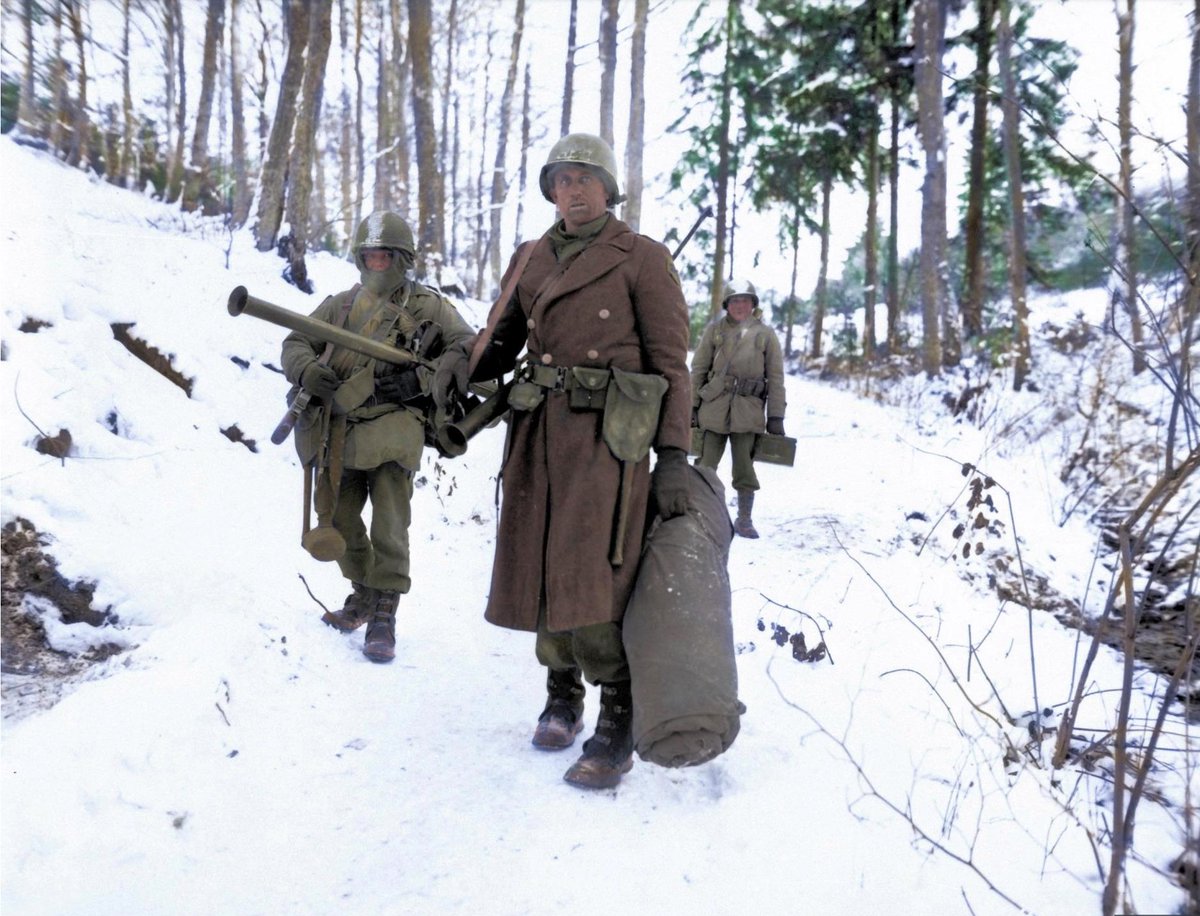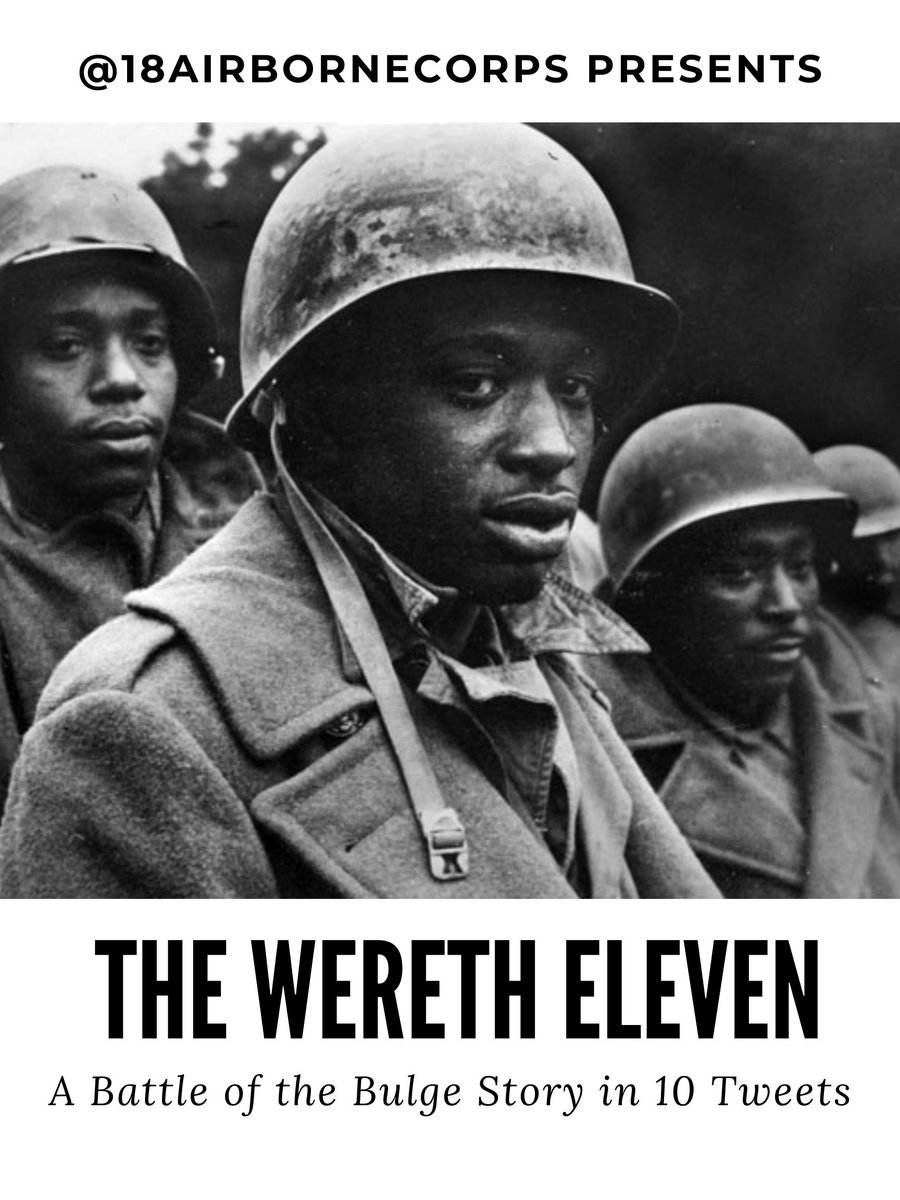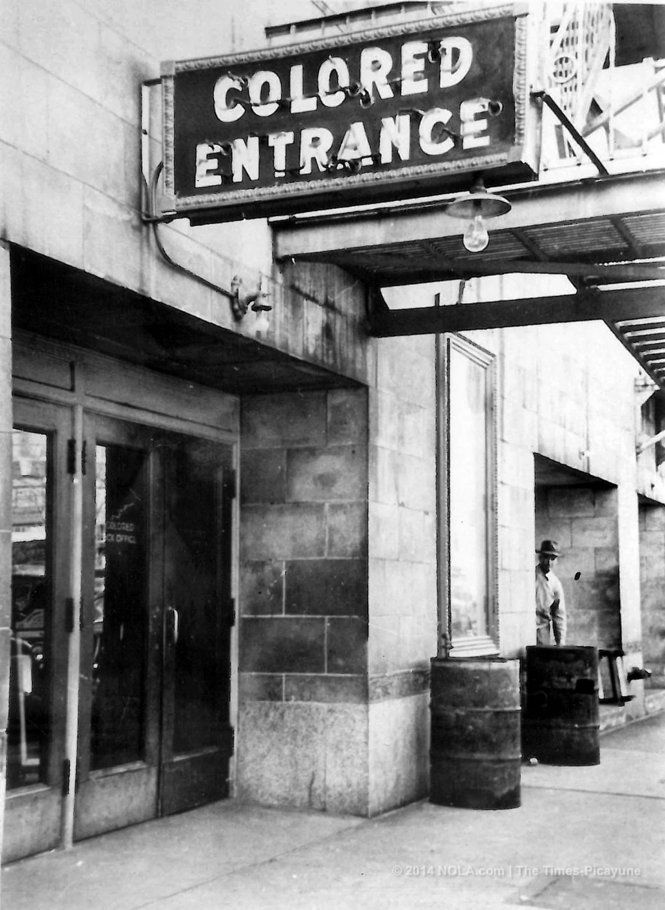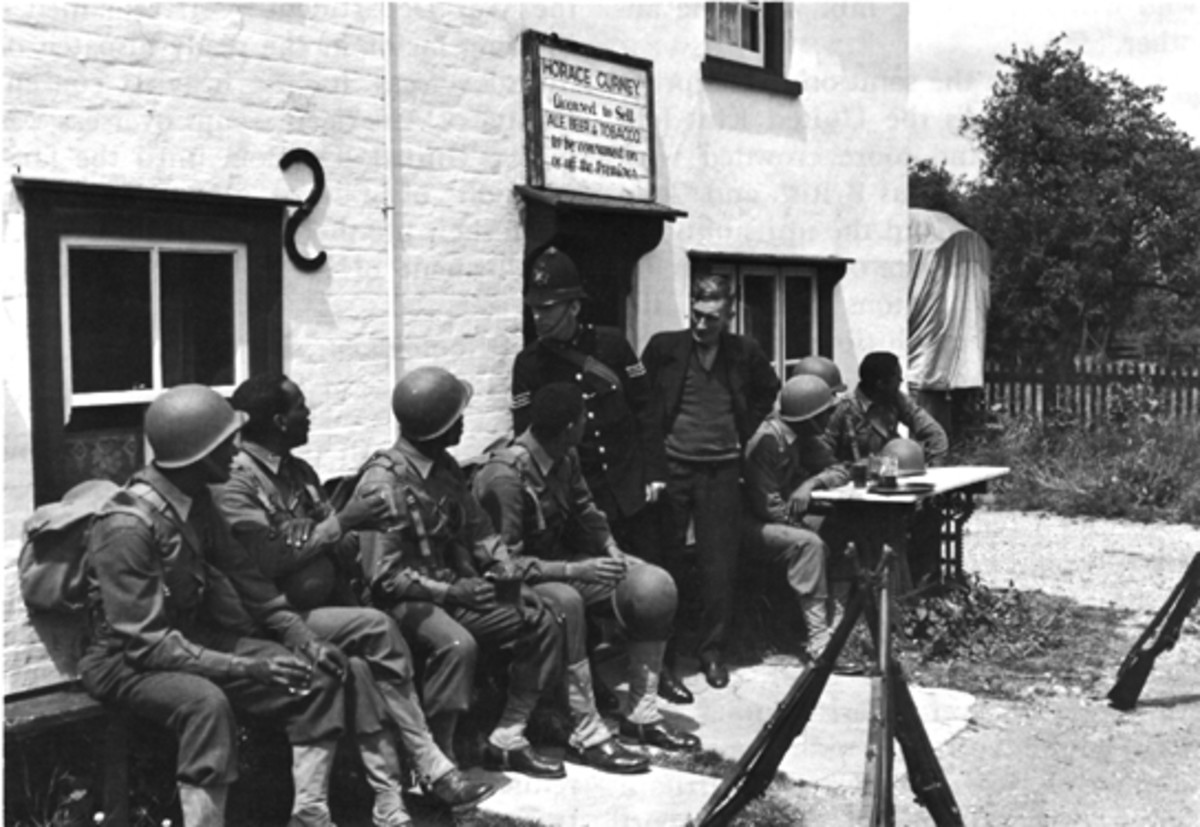
1 OF 15:
BATTLE OF THE BULGE DAY 3: DECEMBER 18, 1944
Battling Bastards of Bastogne
~2:15 AM, Major General Matthew Ridgway, unaware of the fighting in Ardennes, and sleeping in his HQ, is awakened by a call from Lieutenant General Courtney Hodges, commander of First Army.
BATTLE OF THE BULGE DAY 3: DECEMBER 18, 1944
Battling Bastards of Bastogne
~2:15 AM, Major General Matthew Ridgway, unaware of the fighting in Ardennes, and sleeping in his HQ, is awakened by a call from Lieutenant General Courtney Hodges, commander of First Army.

2 of 15:
Hodges, calling from the town of Spa in Belgium, tells Ridgway that the Germans are smashing through the Ardennes & the XVIII Airborne Corps had been released from theater reserve and assigned to First Army to help push back the offensive.
Hodges, calling from the town of Spa in Belgium, tells Ridgway that the Germans are smashing through the Ardennes & the XVIII Airborne Corps had been released from theater reserve and assigned to First Army to help push back the offensive.

3 of 15:
Until just recently, with the creation of the 18th Airborne Corps, there was no traditional "reserve" in the European Theater. Now, the 18th was the reserve.
Until just recently, with the creation of the 18th Airborne Corps, there was no traditional "reserve" in the European Theater. Now, the 18th was the reserve.

4 of 15:
Ridgway sends the 101st and 82nd into the teeth of the ferocious German attack.
Here’s Jim Gavin, 82nd commander, who would push east to Werbomont, Belgium.
The 101st would drive into the wood chipper outside of Bastogne, Belgium.
Ridgway sends the 101st and 82nd into the teeth of the ferocious German attack.
Here’s Jim Gavin, 82nd commander, who would push east to Werbomont, Belgium.
The 101st would drive into the wood chipper outside of Bastogne, Belgium.

6 of 15:
Several hundred paratroopers from the Screaming Eagles were in field hospitals for treatment of wounds suffered in Operation Market Garden at the time the call came in. These paratroopers could not go back out to the fight.
Several hundred paratroopers from the Screaming Eagles were in field hospitals for treatment of wounds suffered in Operation Market Garden at the time the call came in. These paratroopers could not go back out to the fight.

7 of 15:
So, the 101st was already at a manpower deficit.
Platoon sergeants walked through the troop barracks, they gave no instructions other than “You ain’t reserve no more, get in the trucks.” They had no additional information to provide.
So, the 101st was already at a manpower deficit.
Platoon sergeants walked through the troop barracks, they gave no instructions other than “You ain’t reserve no more, get in the trucks.” They had no additional information to provide.

8 of 15:
About a thousand of the men of the 101st who piled into trucks to drive more than 100 miles to get into the fight were “replacement troopers.” These men received only a week of field training in France.
About a thousand of the men of the 101st who piled into trucks to drive more than 100 miles to get into the fight were “replacement troopers.” These men received only a week of field training in France.
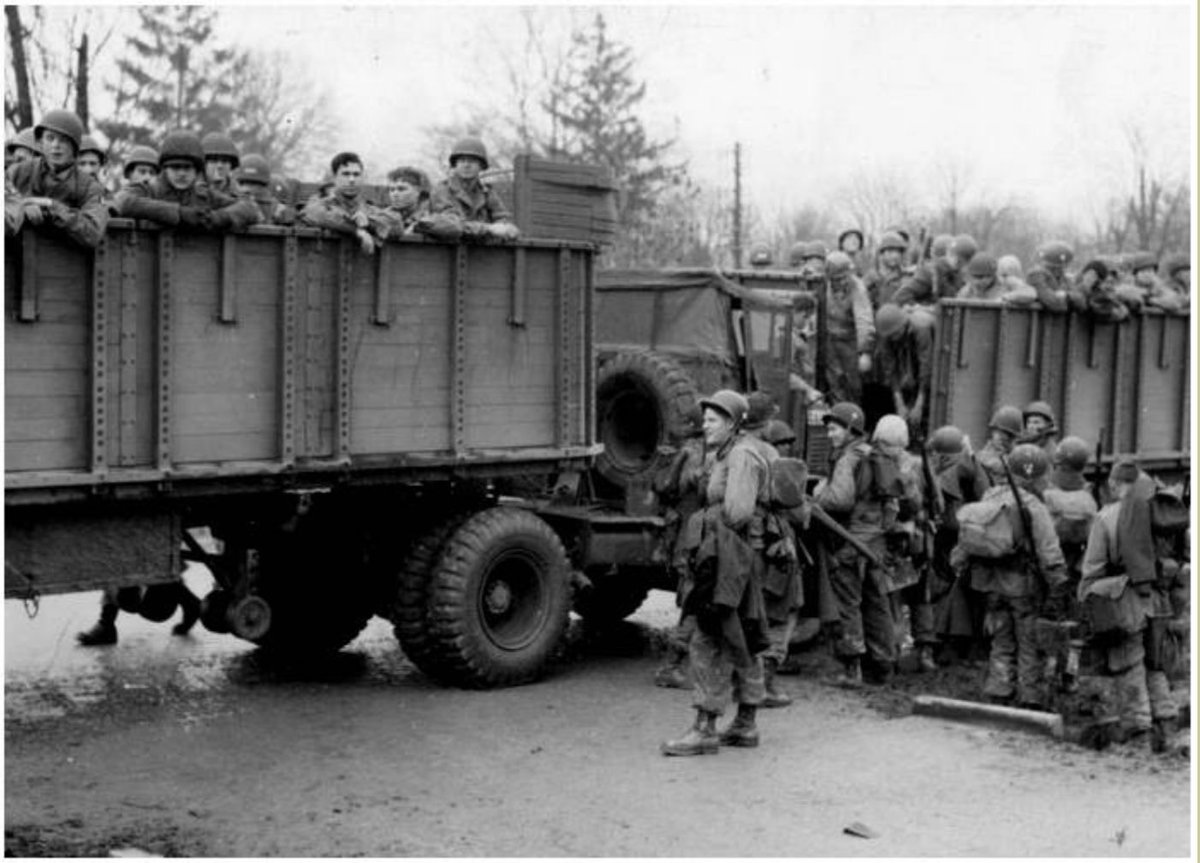
9 of 15:
They then were moved over to the 101st to replace the Paratroopers killed in Operation Market Garden. Many of these new paratroopers had no helmets or rifles.
So, the 101st also had a training deficit.
They then were moved over to the 101st to replace the Paratroopers killed in Operation Market Garden. Many of these new paratroopers had no helmets or rifles.
So, the 101st also had a training deficit.

10 of 15:
Many of the 101st Paratroopers had never received cold weather equipment. They were about to get tossed into a numbing sub-zero glacial blast without the right gear.
Many of the 101st Paratroopers had never received cold weather equipment. They were about to get tossed into a numbing sub-zero glacial blast without the right gear.

11 of 15:
As the men approached Bastogne, they could hear ferocious artillery fire and knew they were going to be in a hell of a fight.
As the men approached Bastogne, they could hear ferocious artillery fire and knew they were going to be in a hell of a fight.

12 of 15:
Their commander, Maxwell Taylor, was in DC at a staff conference (hell of a time to go TDY). All the better, the men didn't like Taylor...he wasn't a Soldier's leader and he didn't live and fight with the boys.
The men LOVED the acting commander, Tony McAuliffe.
Their commander, Maxwell Taylor, was in DC at a staff conference (hell of a time to go TDY). All the better, the men didn't like Taylor...he wasn't a Soldier's leader and he didn't live and fight with the boys.
The men LOVED the acting commander, Tony McAuliffe.

13 of 15:
Upon arrival in Bastogne at the end of the day on December 18th, General McAuliffe placed his headquarters in the Hotel de Commerce. As he watched the men disembark the trucks, McAuliffe knew he was in trouble.
Upon arrival in Bastogne at the end of the day on December 18th, General McAuliffe placed his headquarters in the Hotel de Commerce. As he watched the men disembark the trucks, McAuliffe knew he was in trouble.

14 of 15:
He was an acting commander leading outnumbered ill-equipped replacement troops fighting the best-trained, best-resourced Panzer forces in the Germany Army.
He was an acting commander leading outnumbered ill-equipped replacement troops fighting the best-trained, best-resourced Panzer forces in the Germany Army.

FINAL:
McAuliffe knew that if they could win against these odds, the 101st Airborne Division, newly formed for this war, would become legendary.
McAuliffe knew that if they could win against these odds, the 101st Airborne Division, newly formed for this war, would become legendary.

• • •
Missing some Tweet in this thread? You can try to
force a refresh



